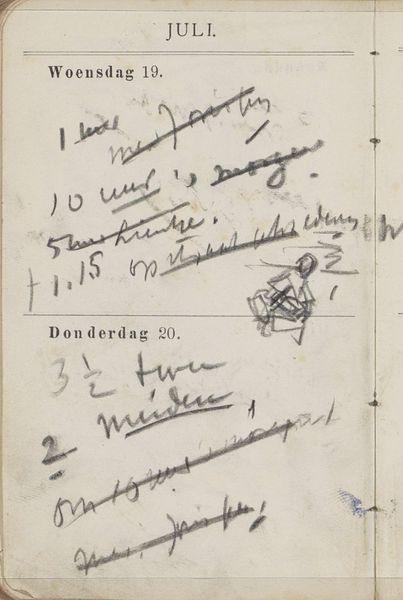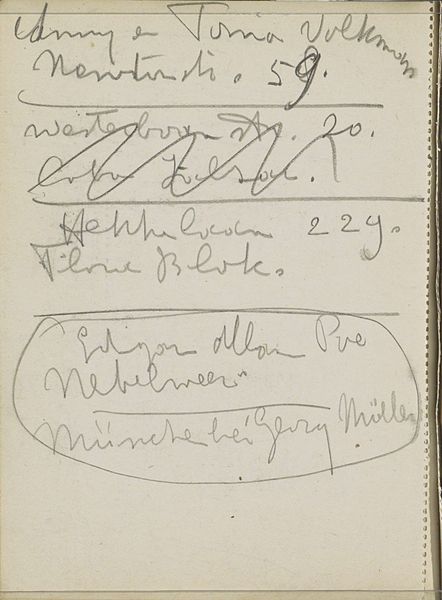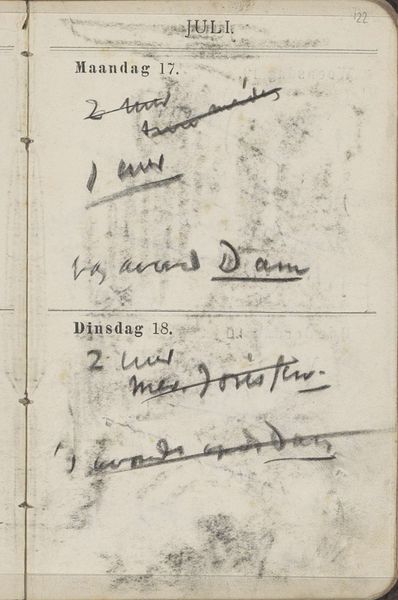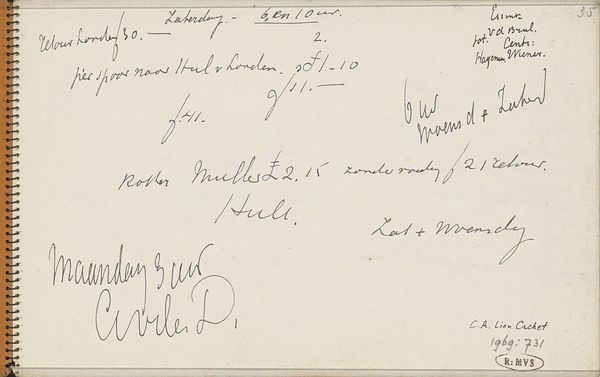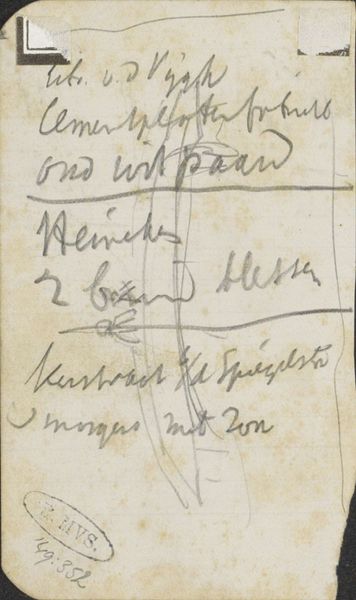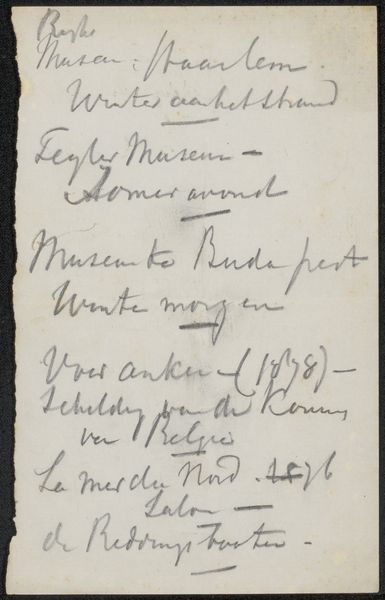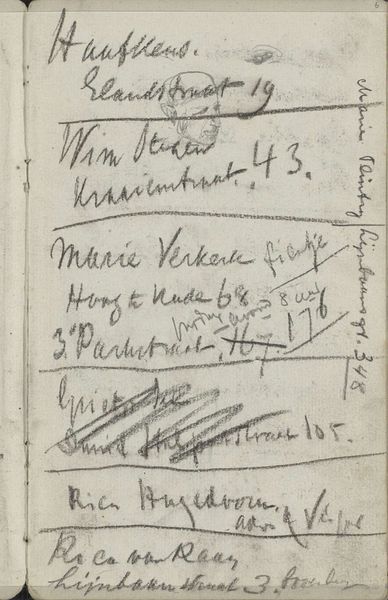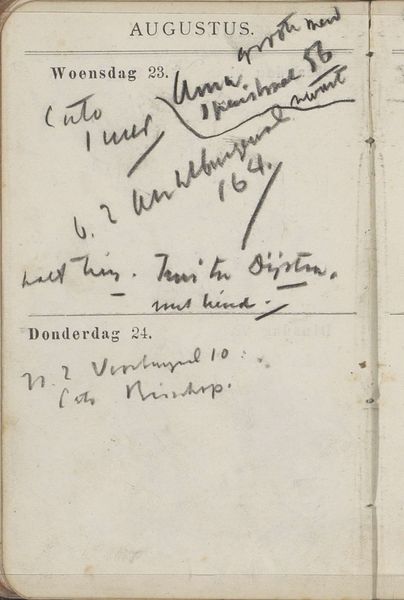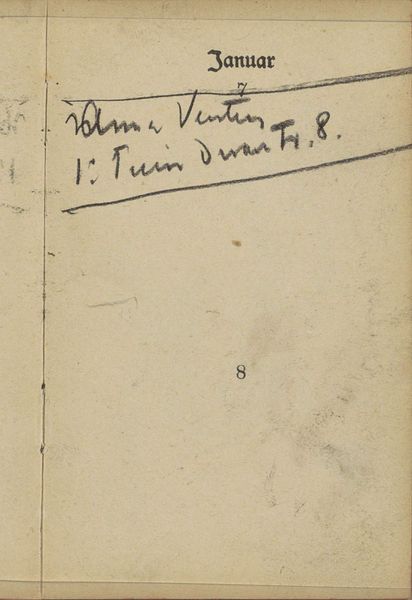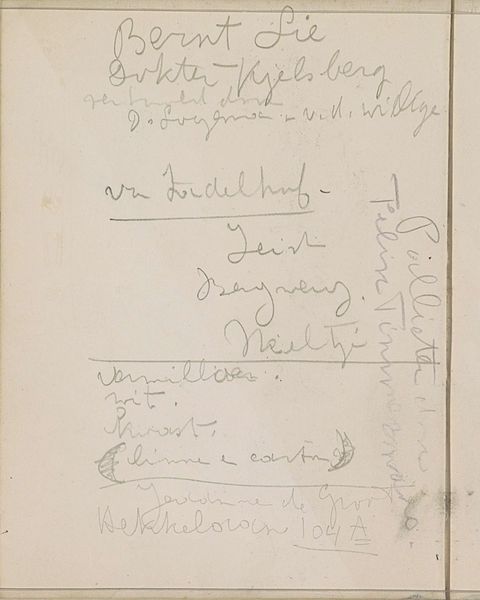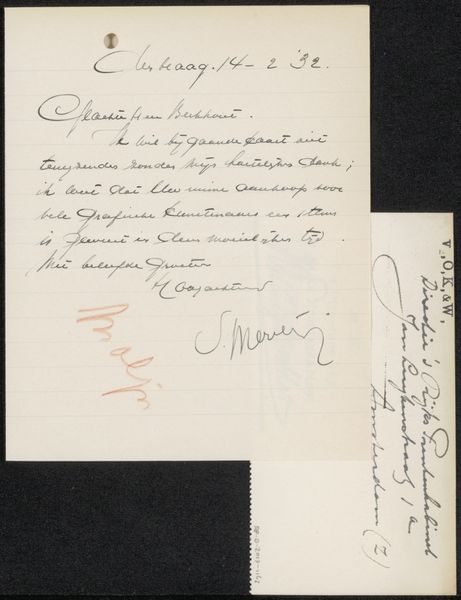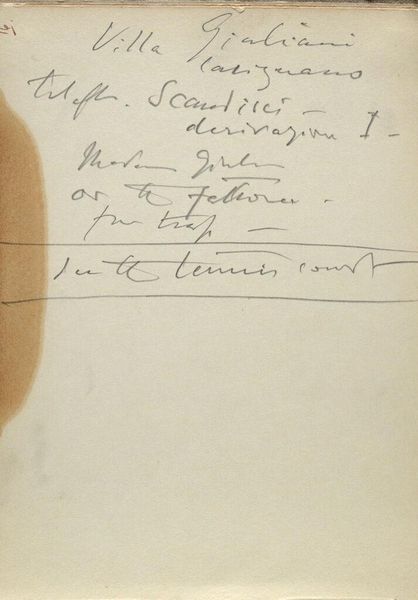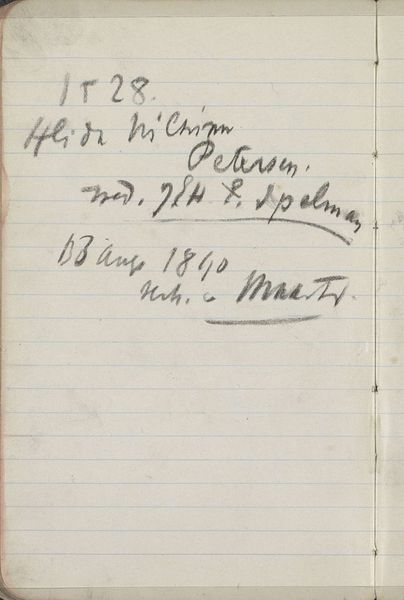
Copyright: Rijks Museum: Open Domain
Editor: So, this is George Hendrik Breitner’s "Annotaties," made in 1893. It’s ink on paper, held at the Rijksmuseum. It feels very immediate, like a glimpse into Breitner’s personal thoughts and schedule. It gives us a look at mundane notes and reminders of his daily life. How do you interpret this work? Curator: These kinds of intimate notations offer us access to the inner workings of an artist’s mind and its position in society. Think about the political climate of the Netherlands at the time. Rapid industrialization, rising social tensions... Breitner, known for capturing Amsterdam's street life, was navigating this complex world. How might these annotations reflect those tensions or inform his wider body of work that addresses such topics as class and industrialization? Editor: That's interesting. I hadn't thought about connecting personal notes to broader societal issues. It feels private but it’s also happening at a certain time in history, influencing it and being influenced by it. Curator: Precisely. Consider who had the privilege of keeping diaries and annotating their lives. Breitner's work, even in these personal scribbles, can prompt us to question the historical representation of different voices and lived experiences. The messy annotations become more than just a list, they're the record of a life lived in that climate. Can we also consider ideas around accessibility and readability, in comparison to artworks exhibited on the wall? Editor: I see what you mean. Thank you, this has really changed how I see what might appear on the surface to be a quick personal memo. Curator: These reflections offer powerful avenues for considering ways artworks may engage with societal frameworks beyond the picture plane.
Comments
No comments
Be the first to comment and join the conversation on the ultimate creative platform.
